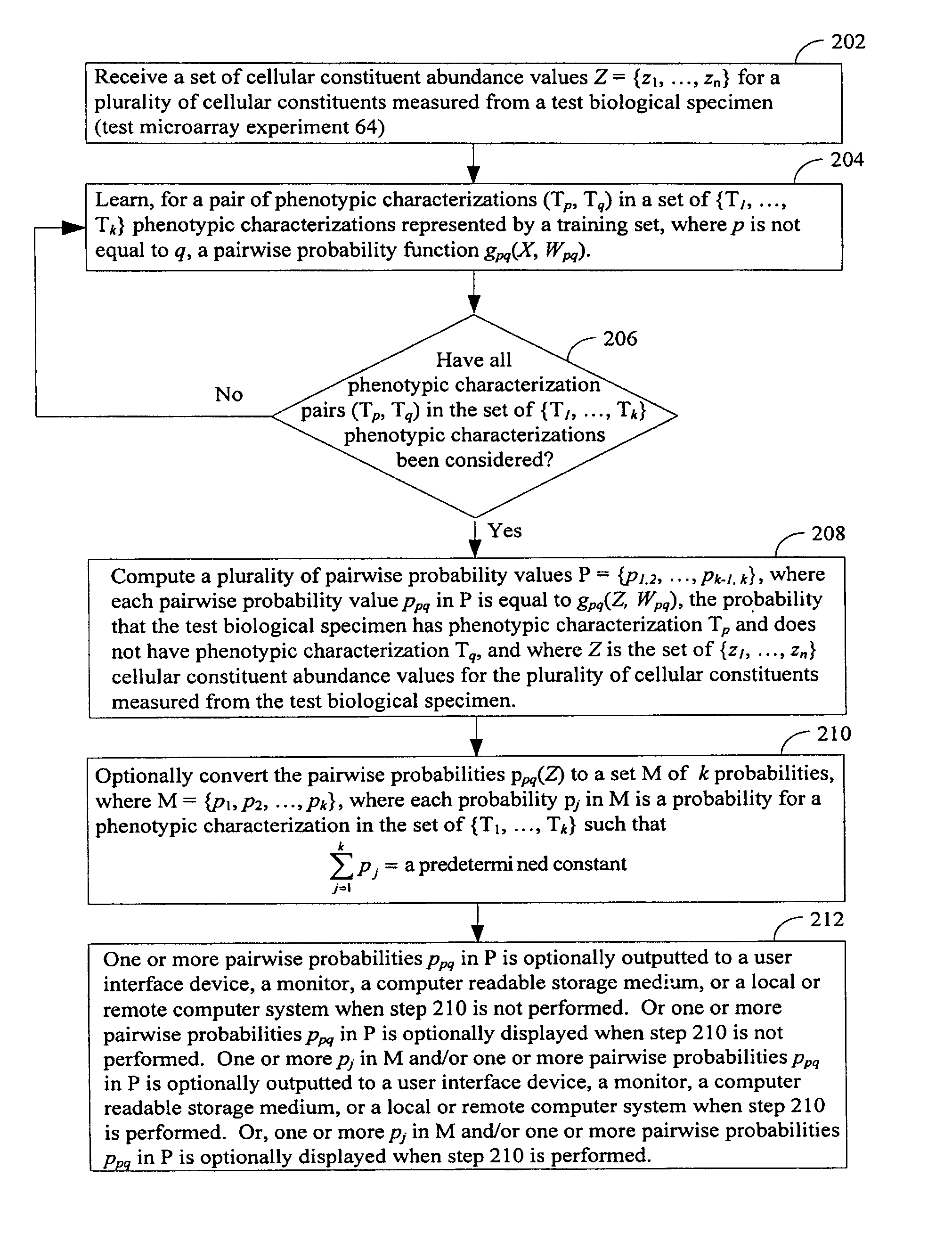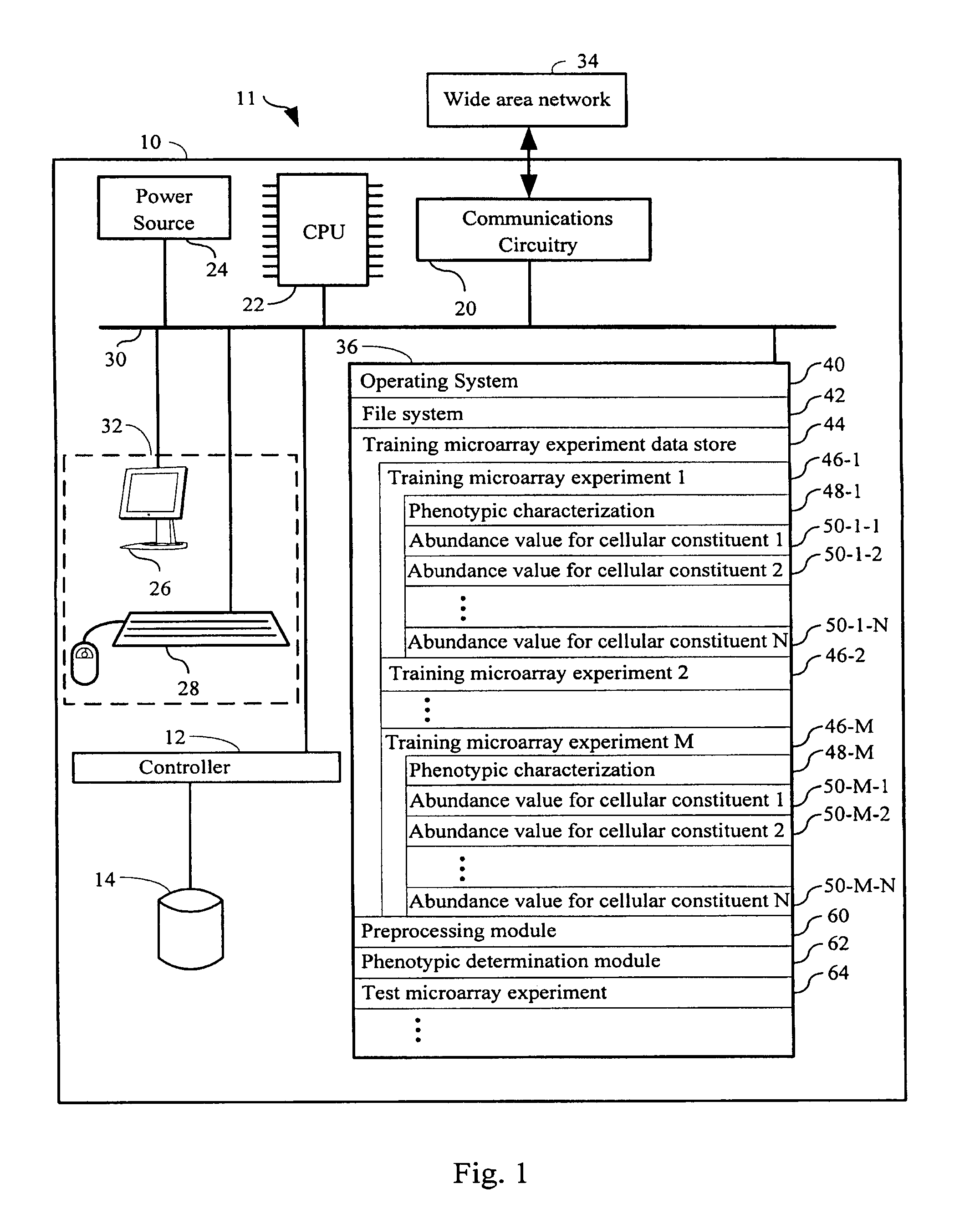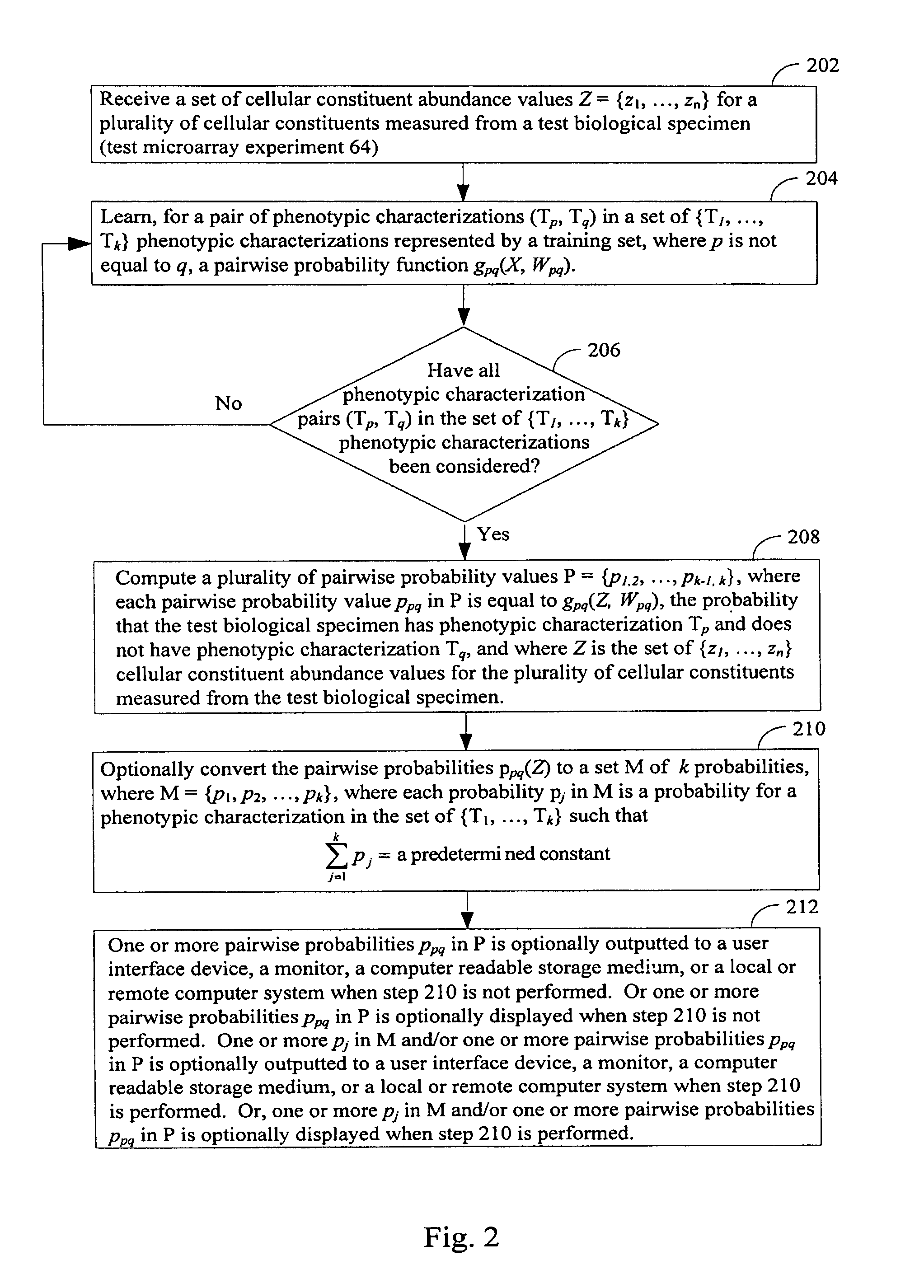Systems and methods for diagnosing a biological specimen using probabilities
a biological specimen and probability technology, applied in the field of systems and methods for diagnosing biological specimens using probabilities, can solve the problems of increasing patient suffering, unable to provide the information needed to begin standard-of-care, and unable to diagnose tumors
- Summary
- Abstract
- Description
- Claims
- Application Information
AI Technical Summary
Benefits of technology
Problems solved by technology
Method used
Image
Examples
embodiment 1
[0237]A method of determining, for each respective phenotypic characterization in a plurality k of phenotypic characterizations, a probability that a test biological specimen has the respective phenotypic characterization, the method comprising:
[0238](A) computing, for each respective pair of phenotypic characterizations (T1, T2) in phenotypic characterization pairs formed from phenotypic characterizations in the plurality of phenotypic characterizations, a decision function having a score f(X), wherein
[0239]f(X)=∑Yi∈T1wi′s(X,Yi)-∑Yj∈T2wj″s(X,Yj)+b
[0240]and wherein[0241]Yi={yi1, . . . , yin} is the set of n cellular constituent abundance values for a first plurality of cellular constituents measured from a sample i, from a training population, wherein sample i has phenotypic characterization T1 in the plurality of phenotypic characterizations;[0242]Yj={yj1, . . . , yjn} is the set of n cellular constituent abundance values for a second plurality of cellular constituents...
embodiment 2
[0255]The method of embodiment 1, wherein s(X, Yi) is equal to the value of the kernel function e(−y[(x1−yi1)2+(x2−yi2)2+ . . . (xn−yin)2]), wherein x1, . . . , xn are cellular constituent abundance values in X that respectively correspond to cellular constituent abundance values yi1, . . . , yin in Yi; and wherein s(X, Yj) is equal to the value of the kernel function e(−y[(x1−yj1)2+(x2−yj2)2+ . . . (xn−yjn)2]), wherein x1, . . . , xn are cellular constituent abundance values in X that respectively correspond to cellular constituent abundance values yj1, . . . , yjn in Yj.
embodiment 3
[0256]The method of embodiment 1 or 2, the method further comprising determining values, for a given pair of phenotypic computations (T1, T2), for the set of weights w′is, w″j, and b used in the decision function with score f(X) before the computing step (A) by subjecting each set of cellular constituent abundance values in the training population that were measured from samples that have phenotypic characterization T1 or T2 to a support vector machine.
PUM
| Property | Measurement | Unit |
|---|---|---|
| volumes | aaaaa | aaaaa |
| volumes | aaaaa | aaaaa |
| melting temperature | aaaaa | aaaaa |
Abstract
Description
Claims
Application Information
 Login to View More
Login to View More - R&D
- Intellectual Property
- Life Sciences
- Materials
- Tech Scout
- Unparalleled Data Quality
- Higher Quality Content
- 60% Fewer Hallucinations
Browse by: Latest US Patents, China's latest patents, Technical Efficacy Thesaurus, Application Domain, Technology Topic, Popular Technical Reports.
© 2025 PatSnap. All rights reserved.Legal|Privacy policy|Modern Slavery Act Transparency Statement|Sitemap|About US| Contact US: help@patsnap.com



